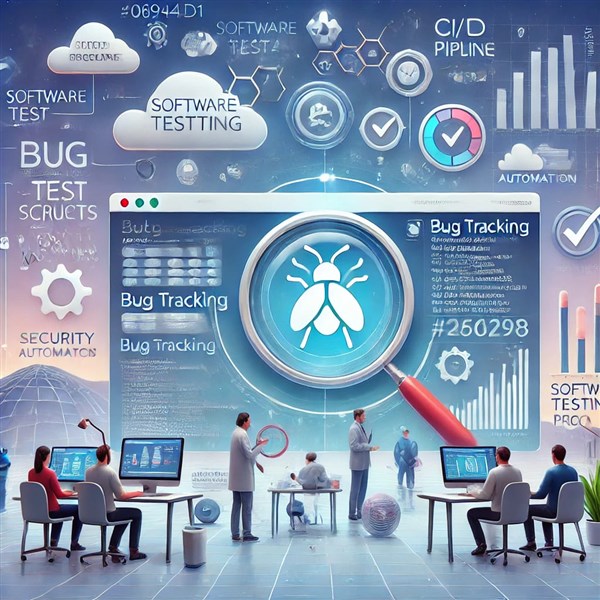We're open through the holidays to support your upskilling goals — Which training do you want to book?
We're open through the holidays to support your upskilling goals — Which training do you want to book?
Unable to find what you're searching for?
We're here to help you find it
The software testing process has undergone a significant transformation over the decades. What began as a manual, time-consuming process has evolved into a highly automated and AI-driven practice. The increasing complexity of software, the need for faster releases, and the rise of DevOps and Agile methodologies have all played a crucial role in shaping modern software testing.
Today, software testing is not just about finding bugs—it is an integral part of the software development lifecycle (SDLC), ensuring security, performance, scalability, and user experience. In this blog, we’ll explore how software testing has evolved over the years, highlighting the key innovations and methodologies that have transformed the industry.
In the 1950s and 1960s, software development was still in its infancy. During this time:
🔹 Software was mainly developed for military, government, and scientific purposes.
🔹 Testing was ad-hoc, meaning developers tested their code manually without a structured approach.
🔹 There were no dedicated QA teams—developers were responsible for writing and testing their own code.
At this stage, software testing was not seen as a separate discipline but rather as a part of programming.
In the 1970s, the concept of debugging gained prominence. Developers realized that software errors could be systematically identified and fixed.
🔹 Testing was still mostly manual, but structured debugging techniques were introduced.
🔹 The Waterfall Model was widely adopted, which included a testing phase after coding.
🔹 Basic test plans and test cases started being documented.
However, since testing occurred only after the development phase, many defects were discovered too late, making them costly to fix.
By the 1980s, companies started realizing that finding bugs early in the development process reduced costs. This led to:
✅ The emergence of dedicated software testers and QA teams.
✅ The introduction of formal test strategies, including unit testing, integration testing, system testing, and acceptance testing.
✅ The development of test case documentation, improving repeatability and reliability.
With increasing software complexity, manual testing became slow and inefficient. The 1990s saw the introduction of:
🔹 Automated testing tools such as WinRunner and LoadRunner.
🔹 Regression testing automation to verify that changes did not break existing functionality.
🔹 The rise of black-box and white-box testing techniques to improve testing coverage.
Despite these advancements, automated testing was limited due to the high costs of tools and a lack of skilled automation testers.
The early 2000s saw a fundamental shift in software development with the rise of the Agile methodology. Unlike the traditional Waterfall model, Agile introduced:
✅ Frequent software releases with shorter development cycles (sprints).
✅ The concept of continuous integration and continuous delivery (CI/CD).
✅ Test-Driven Development (TDD) and Behavior-Driven Development (BDD), where tests were written before the code.
This period also saw:
🔹 The rise of Selenium (2004) – an open-source automation tool that made testing more accessible.
🔹 The expansion of performance and security testing to improve software quality.
🔹 The introduction of cloud-based testing, allowing remote teams to collaborate better.
As software development accelerated, the need for fast, reliable testing became critical. Continuous testing became an essential practice in DevOps and Agile environments.
🔹 Automated testing frameworks like JUnit, TestNG, and Cucumber became standard.
🔹 Companies started using containerization (Docker) and virtualization for testing environments.
🔹 The rise of API testing tools like Postman and Rest-Assured.
🔹 Performance testing tools like JMeter and Gatling were widely adopted.
By the late 2010s, DevOps-driven testing was the norm, focusing on early bug detection, automation, and seamless integration with CI/CD pipelines.
With the rise of artificial intelligence (AI) and machine learning (ML), software testing is now entering a new era of intelligent automation.
🚀 AI-powered test automation tools like Test.ai, Applitools, and Functionize use machine learning to:
✔ Predict and identify potential failures before they occur.
✔ Automatically generate, execute, and optimize test cases.
✔ Perform visual testing to detect UI changes.
Many companies are now moving towards scriptless test automation, allowing testers to create test cases without coding.
✅ Tools like Katalon Studio, TestCraft, and Leapwork enable non-developers to automate tests.
✅ Reduces the learning curve for manual testers transitioning to automation.
As organizations focus on cybersecurity, modern software testing also includes:
🔹 Security testing automation with tools like Burp Suite and OWASP ZAP.
🔹 Shift-left security testing, where security is integrated into CI/CD pipelines.
🔹 The adoption of hyperautomation, combining AI, RPA (Robotic Process Automation), and DevOps for end-to-end automation.
🔹 AI-powered self-healing test automation will further reduce manual test maintenance.
🔹 Blockchain testing will emerge as businesses adopt blockchain technology.
🔹 IoT Testing will become crucial with the rise of connected devices.
🔹 Cloud-based testing will dominate, making on-demand testing more scalable.
Conclusion
The software testing process has evolved from manual debugging in the early days to AI-driven, fully automated testing frameworks today.
Key Takeaways:
✔ Manual testing has given way to automation, making testing faster and more efficient.
✔ Agile, DevOps, and CI/CD have made testing an ongoing process, not just a final phase.
✔ AI, machine learning, and scriptless automation are shaping the future of software testing.
✔ Security, performance, and cloud-based testing are now integral parts of the software testing lifecycle.
As software development continues to evolve, software testers must adapt to new technologies and methodologies to stay ahead. 🚀
At Koenig Solutions, a leading IT training company, we provide comprehensive training in software testing processes and other top technology courses. Our certifications are designed to give you the skills and knowledge you need to excel in the ever-evolving IT industry.

Aarav Goel has top education industry knowledge with 4 years of experience. Being a passionate blogger also does blogging on the technology niche.










